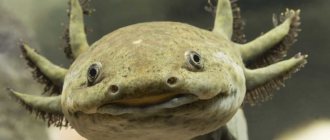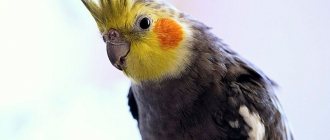Review author: “ZooVita”
Turtles are interesting animals. They have been very popular in Europe for many years, and for good reason. They do not create problems when it comes to care, but breeding these reptiles requires the owner not only to acquire knowledge, but also to be willing to deepen it.
Buying a Yellow-bellied Turtle
When buying a reptile at a pet store or market, it is recommended to take it to a veterinarian for examination. This is necessary to determine the general condition, whether there are diseases, and to look for the presence of injuries.
If you already have sea turtles at home, and you purchased another one, then the new one must be kept separately for 90 days. It is also impossible to keep adults and small ones in the same place, this can lead to injury to the latter. Only turtles of approximately the same size are kept together.
After changing its place of residence, the turtle behaves inhibited or, conversely, actively. During this period, you must not disturb her, but do not forget to feed her.
Interesting Facts
Sea turtles appeared about 200 million years ago and have remained virtually unchanged.
Scientists have concluded that all species of sea turtles are descended from one single species; These animals, while underwater during sleep, are able to hold their breath for almost two hours;
All sea turtles are excellent divers, for example, leatherback turtles, in pursuit of their favorite delicacy - jellyfish, are able to dive hundreds of meters. It would seem that when diving to such a depth, very high pressure could rupture the air-filled lungs, but this does not happen. Thanks to their unique structure, these sea turtles push air out of their collapsing lungs.
After this, they begin to consume the oxygen stored in the red blood cells and muscles. Unlike most mammals, turtles have a higher concentration of red blood cells, as well as a lot of myohemoglobin, an oxygen-binding protein found in muscles.
Constantly swallowing seawater would kill a sea turtle if nature had not endowed it with special salt glands that go into the eyes, along with the tear ducts. With the help of these glands, the turtle gets rid of excess salt in its body. When the female comes to the beach to lay her eggs, she appears as if she is crying. But these are not tears, but a secretion that is secreted by these glands, protecting the turtle's eyes from the sand that gets into the eyes when it digs a hole to lay its eggs.
How to handle it correctly
When a person wants to pick up a turtle, it is recommended to remember that it is wet and slippery. She doesn’t like these manipulations, so she hisses, can scratch, since she has large claws, and is even capable of biting. Therefore, the pet must be held with both hands at the same time.
After spending time with the reptile, you need to wash your hands with hygiene products, since it is a waterfowl and has its own microflora. It is necessary to ensure that the food and water in the container are fresh. Turtles spread salmonella. Therefore, it is forbidden to wash the reptile in the kitchen sink and its accessories too.
Reviews
Illaria Vadimovna, 31 years old, Ruza
My little turtles seemed like a little disaster to me at first. They are very quiet, calm creatures, but, as they say, in still waters there are devils, and in my quiet aquarium there were three little devils with shells. I even wanted to give them a symbolic name at first, but I changed my mind and they remained Vasya, Lyusya and Dusya. After I arranged for them a heavenly place for their peaceful existence - I installed a heater, a filter and an ultraviolet lamp, for a long time they tried to get used to it. Having dared, I constantly found traces of their crime: an overturned filter, a damaged heater. The decorations in the aquarium also deteriorate very quickly, and I don’t have time to change them. Despite all the problems that I encountered after I got the turtles, I am happy with their presence in my life and very soon they will become little members of the family.
Igor Valerievich, 54 years old, Belgorod
My wife and I got a large red-eared slider after we moved into a new house. We did not immediately learn how to properly care for her, so we encountered a number of problems. The seller at the pet store was not competent enough, which was a consequence of Gosha’s death.
Our Gosha was not young, but we knew it. What captivated me was that, according to the seller, his ancestors participated in turtle competitions, so he has an impeccable pedigree. I didn’t immediately notice that he was slow and passive. As it turned out, this is not the norm for a turtle of his age (10 years old). I thought that Gosha was not clean enough, since I had to change his water almost every day. Small debris, an unpleasant smell - all this appeared somehow unexpectedly, and I blamed it all on the unusualness of my pet. Gosha was the most active when he wanted to play with a filter for water purification. It was after this, it seemed to me, that small wounds began to appear on his scales. He must have been unusually active during the game!
One Saturday evening I saw something that changed my imagination forever. Dead Gosha lay on a ledge from the aquarium, which acted as a shore. I didn’t immediately understand what had happened to him and for a long time I wanted to bring him to his senses. However, everything is in vain. Now I have snails in my aquarium, but Gosha continues to emerge in my memory as my most favorite pet.
Svetlana Sergeevna, 25 years old, Samara
It so happened that I took custody of a tiny turtle, which is my nephew. She grew up in an aquarium, or rather, just some kind of rectangular shape without proper care. There is nothing to say about the presence of an ultraviolet lamp - the turtle has not known it since childhood. All this time, the water in which the turtle was kept was cold and not always clean. In other words, everything that should be provided in caring for a turtle was not provided. It was immediately clear from the turtle that it was weak and underdeveloped, and if it had lived in such conditions for an extra week, it would probably not have avoided death.
I bought a large aquarium with a capacity of almost 100 liters, filled with aquatic plants. The shore allowed the turtle to develop: it often came out to bask in the sun, the role of which was played by a lamp. After good nutrition, which included not only dry mixtures and crustaceans, my turtle increased significantly in size. I do not regret that I invested a lot of money to take care of my new pet, because we are responsible for those we have tamed!
Caring for a turtle
Sea turtles require water and land. Therefore, the first thing to do is purchase an aquarium with a volume of at least 150 liters. If the reptile is small, then it grows relatively quickly. Because of this, it is recommended to buy a container “for growth”. Water is poured so that there is enough for the pet to swim and turn over.
An island of sushi is placed in the aquarium; it is sold in a specialized store. The pet will periodically crawl out and bask under the installed lamp. The temperature on land exceeds water temperature by 10 degrees. The island should occupy a quarter of the aquarium in area. But exceeding the temperature regime on the island is unacceptable. This will lead to overheating, which means maintenance will not be performed properly.
Requirements for the island:
- one side of the land should be immersed in water, that is, half-flooded;
- position the land so that the reptile does not get stuck between the glass of the aquarium and the side of the land;
- made of safe materials;
- stayed well on the water so that the pet could not turn it over;
- textured surface.
Taking care of your health
Compliance with all the rules for the care and maintenance of waterfowl turtles in a home apartment will protect the animal from possible infections and diseases. However, any pet can get sick. Common diseases and treatments are presented in the following table:
| Disease | Symptoms | Treatment |
| Abscess / Otitis | Tumor in the ears, on the limbs | Operation |
| Pneumonia | Does not drown, falls over, does not eat, wheezes, white mucus and bubbles appear from the nose | Deadly. Treated in a hospital or at home with injections |
| Conjunctivitis/swelling/redness of the eyes | Swollen eyes, redness, suppuration under the eyelids, lack of appetite | Local treatment |
| Soft/Twisted Shell (rickets / osteopenia / hypocalcification) | Softening of the shell, its curvature | The curvature process is irreversible; local treatment |
| Helminthiasis | Diarrhea/constipation, presence of helminths in tests | Treatment by a veterinarian |
| Dermatitis/skin fungus | Increased shedding, skin redness, white growths | Treatment by a veterinarian |
How to heat an island
Turtles love to bask on the sand under the sun's rays. This should be done at home, only instead of the sun there will be a lamp. The reptile feels good when the temperature of the shell under the lamp is 30–35 degrees. To monitor this parameter, you must place a thermometer. If the thermometer readings exceed the norm, the pet may get burns. We must not forget that if there is more than one turtle in the aquarium, they love to climb on top of each other. This makes it dangerous to get close to a heat lamp.
When diving, your pet splashes drops in different directions. They can get on a working lamp, as a result, it will burst. This means that the lamp is positioned in such a way as to exclude all these moments.
Reproduction of pet turtles
The statement that turtles must hibernate every year is not always true. At home, this is not even advisable. Only a specialist can prepare an animal for hibernation and ensure the correctness of such rest, otherwise it will sleep forever.
If your pet stays in a corner of the terrarium for a long time and tries to burrow into the ground, it is probably getting ready for sleep. To prevent this from happening, it is necessary to fatten it and carefully read specialized literature on ensuring turtle hibernation so that the animal remains alive and healthy. With good care and proper nutrition, pets can live 15-30 years.
If you are serious about running a “turtle” business, it is better to start with 3 individuals of the same age and size - 2 females and 1 male. More than two men compete for territory and ladies. It is better to keep aquatic reptiles separately, allowing them to be together only for mating.
When buying a pet, you need to pay attention to the behavior - this will tell you whether the individual is healthy. The shell should be without cracks, there should be no spots on the skin, the mucous membrane of the mouth should be pale pink in color, saliva should not be sticky, breathing should be calm, no discharge from the mouth or nose.
Most turtles carry salmonella, as well as other bacteria and viruses that can be dangerous (especially to children). Therefore, you need to ensure that your child washes their hands thoroughly when coming into contact with a turtle.
Water requirements
The red-eared turtle is a waterfowl reptile. She feeds, defecates, and sleeps in water. Therefore, water should always be clean and fresh. Dirty food causes discomfort to the pet and is a source of disease.
The lowest water level in a container is measured by the size of its shell. She should calmly roll over onto her stomach if she ends up on her back. But the declared level is the lowest. Ideally, more water is recommended, then it stays clean longer.
When changing water, it must be left for 24 hours. It is important to ensure that the water does not drop to 20 degrees, but is between 22–28 degrees. If it is necessary to heat the water, install a heater. The water temperature is controlled using a thermometer.
Since the pet performs all its physiological needs in the aquarium, the water becomes dirty and smells unpleasant. To avoid this, change the water once every 7 days. To perform this procedure less frequently, you need to install a filter. The internal filter does not cope with water after the turtle, it is weak. Of course, you can buy an external filter, it fits perfectly, but its price is not cheap.
Types and breeds of turtles for home keeping
There are 335 species of turtles in the world, but only a few of them can be kept at home. First of all, it is necessary to distinguish between freshwater and terrestrial reptiles. Common types of pet turtles include:
Wood turtle
Scientific name: Glyptemys insculpta. Originally from North America. It is characterized by a dark gray shell. The legs, head and abdomen are orange with black spots, the limbs are short and strong.
Males are larger than females, the size of an adult is 23 centimeters, weight is about a kilogram. They are omnivores. In spring and summer it lives on the surface, in winter and autumn it chooses an aquatic environment.
Steppe tortoise
Dark shell with round light spots. The head and limbs are light, the claws on the paws are well developed. It reaches 22 centimeters in size and lives for a long time. She has excellent eyesight, can recognize people, is sensitive to soil vibrations, and has a developed sense of smell.
Greek turtle
Slightly larger than the steppe one - 25-30 cm. They are kept in a terrarium with a spotlight, next to which it can bask.
Red-eared slider (Trachemys scripta)
Lives in water. The name comes from the characteristic red stripes on the cheeks. She needs an aquarium with lots of plants and rocks. In the summer, if possible, it is worth putting it in a pond; it loves to bask in the sun, under the surface of the water.
It reaches a length of 30 centimeters, females are slightly larger than males. They live about 40 years. Young animals feed on fish, snails and crustaceans, while older animals eat leaves and grass.
How to feed your pet
The sea turtle's diet is varied:
- artificial food;
- fish;
- fish food;
- vegetables;
- insects;
- plants for the aquarium.
But with all the variety, it is necessary to control so that the reptile does not overeat. For this purpose, it is recommended to use a calcium diet from time to time. The pet loves to hunt for its prey, but does not refuse carrion. The main thing is to remember to add calcium to your menu. The turtle does not produce saliva while eating, so it pulls the food into the water. You can use this for your own benefit, that is, feed your pet in another container with water, then the water in the aquarium will remain clean longer.
It is important to know that the older the turtle, the more plant foods it eats and the less protein. Therefore, the diet of an adult or old turtle consists of 25% protein and 75% plant foods.
Food for pet turtles (diet)
What to feed pet turtles. Some aquatic species are typical predators, others have a certain percentage of plants in their diet, and others are vegetarians. You need to find out this before buying a pet. They eat live, dried, prepared and frozen food.
Before lunch, frozen food must be thawed and rinsed.
Live food:
- water larvae,
- mosquito larvae,
- tadpoles and frogs,
- daphnia,
- freshwater fish,
- aquarium fish (guppies, gladioli),
- water snails,
- bloodworm,
- water beetles.
However, you should not overdo it with the amount of animal food you eat. Although it should dominate the amphibian’s diet, we must not forget about plant foods:
- pansies,
- daisies,
- dandelion leaves,
- plantain leaves,
- aquarium plants,
- clover,
- water fern,
- raspberries,
- strawberry,
- watermelon,
- grape,
- apples,
- peaches
- apricots,
- tomatoes,
- Chinese cabbage.
Usually they give as much food as the animal can eat in 5 minutes. Adults should be fed 2-3 times a week, young (up to 6 months of age) - 1 time a day, newborns (up to 3-4 months of age) - 2 times a day.











